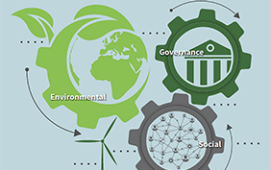
A prominent sustainability disclosures body has said data availability and accuracy are contributory factors in financial institutions’ slow reaction to addressing biodiversity loss linked to their investments.
Only one in 10 banks, asset owners, asset managers and insurers disclosing metrics on their portfolios’ impacts forests and water security, the CDP said in its latest examination of the finance industry’s biodiversity reporting performance.
In the “Nature in Green Finance” report, the international body formerly known as the Carbon Disclosure Project urged institutions to begin filing detailed metrics to help ensure they direct capital to the companies and projects that can help protect and restore biodiversity around the world. The report noted that many already use scenario analysis to help them identify risks and opportunities that arise from assets’ proximity to stressed environments but said efforts to do this were “nascent”.
“The decline of nature damages ecosystem services that companies rely upon, making nature loss a financial risk to companies and governments, financial markets, and even the physical assets of financial institutions,” the report stated. “It is therefore critical that financial institutions have processes in place, such as portfolio risk assessments or transactional due diligence, to identify, assess, and manage all forms of risks across their financing portfolios.”
Key Topic
Biodiversity is a key topic on the sustainability agenda because so much of the world’s economy depends on its maintenance. Reinsurer Swiss Re estimates that 55 per cent of global GDP is tied to nature. The impacts of human activity, such as the desertification of land, pollution of seas and the sky and deforestation, are having such an impact on the world’s flora and fauna that a fifth of dependent businesses are at risk of collapse, it estimates.
Regulators are drawing up plans to include nature-related disclosures in their annual reporting processes. In response, data and technology companies such as NatureAlpha, ISS ESG, Clarity AI and RepRisk have created tools to help financial institutions assess their impacts on nature and the affects that biodiversity stress is having on their investments.
The CDP report stated that institutions had begun addressing the matter but to nowhere near the level that they are focusing on climate risks and opportunities. From a survey of 556 institutions, the report found that while nine in 10 were closely assessing climate data, only around 25 per cent were doing so for forest and water.
Another challenge is the nature of the data they use.
“In total, over 90 per cent of these portfolio assessments for climate change are at least in part, quantitative,” it stated. “In comparison, 60% of the assessments for forests and water involve quantitative aspects, with a much greater reliance on the use of qualitative-only assessments. This is partly due to the maturity of the landscape of tools and data available to financial institutions to assess climate and nature-related risks.”
It said such shortcomings made the use of qualitative analyses essential.
“These analyses, while not yet widespread, can offer vital insights into potential nature-related risks and serve as a strong foundation for the development of quantitative metrics in the future.”
Global Funds
The report’s publication coincided with seventh assembly in Canada of the Global Environment Facility (GEF), a “family” of funds dedicated to addressing biodiversity loss. The latest quadrennial gathering of representatives from the 185 signatory nations created a Global Biodiversity Framework Fund (GBFF) “to mobilise and accelerate investment in the conservation and sustainability of wild species and ecosystems”.
The fund was established to support the aims of the Kunming-Montreal Global Biodiversity Framework, an agreement that came out of the COP15 nature summit in Canada last year. The framework provides a blueprint for reaching biodiversity goals.
The growth in the profile of biodiversity mitigation has seen huge investments made into start-ups geared towards gathering the data needed by financial institutions and companies to address their impacts on the natural world. The most recent funding round saw venture backers including BNP Paribas, inject £9.8 million in NatureMetrics. The London-based company provides kits that enable the testing of DNA from soil and water samples to help monitor the impact of economic activity on a variety of species.
The CDP report concluded optimistically saying that financial institutions are making great strides in nature monitoring.
“While challenges persist, initial efforts are promising and indicative of a paradigm shift in the financial sector towards a sustainable, nature-inclusive approach,” it stated.
Subscribe to our newsletter




